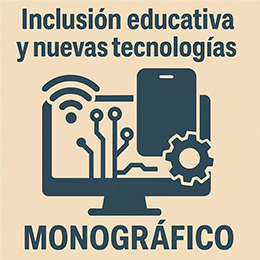M-learning: technological acceptance of mobile devices in online learning
DOI:
https://doi.org/10.51302/tce.2018.193Keywords:
mobile learning, e-learning strategies, technology acceptance model (TAM), mobile technologyAbstract
Learning is a fundamental tool to develop the Digital Agenda for Europe. Mobile devices are a growing technology with a high penetration in markets, consequently, the future of education must incorporate mobile technologies. The m-learning is a critical dimension to achieve the European 2020 Strategy and improve the competitiveness of European society. Therefore, the purpose of this research is to analyses the acceptance of mobile technologies for learning activities in high education. We identify the key aspects to achieve an adequate strategic and innovative development of m-learning. The main conclusion of the research is that the use of mobile devices is accepted and considered useful by students to carry out their academic activities. We have also found that technological support is not a restriction, since young university students dominate mobile technology and do not require any support to use it as an educational tool. We have also found that technological support is not a restriction, since young university students dominate mobile technology and do not require any support to use it as an educational tool. We demonstrate that user training and technical support are not key aspects for the strategic development of m-learning projects, but whether the adaptation of contents to the mobile environment is crucial.
Downloads
References
Caballero Domínguez, A. J. (2006). SEM vs PLS : un enfoque basado en la práctica. En E. Abascal, V. Díaz de Rada e I. Portilla (Coords.). IV Congreso de Metodología de Encuestas, 20, 21 y 22 de septiembre (pp. 57-66). Pamplona, España.
Chen, K., Chen, J. V. y Yen, D. C. (2011). Dimensions of self-efficacy in the study of smart phone acceptance. Computer Standards & Interfaces, 33(4), 422-431. doi: https://doi.org/10.1016/j.csi.2011.01.003.
Cheung, R. y Vogel, D. (2013). Predicting user acceptance of collaborative technologies: an extension of the technology acceptance model for e-learning. Computers & Education, 63, 160-175. doi: https://doi.org/10.1016/j.compedu.2012.12.003.
Chow, M., Herold, D. K., Choo, T.-M. y Chan, K. (2012). Extending the technology acceptance model to explore the intention to use Second Life for enhancing healthcare education. Computers & Education, 59(4), 1.136-1.144. doi: https://doi.org/10.1016/j.compedu.2012.05.011.
Davis, F. D. (1985). A Technology Acceptance Model for Epirically Testing New End-User Information Systems: Theory and Results. Massachusetts Institute of Technology.
Davis, F. D., Bagozzi, R. P. y Warshaw, P. R. (1989). User acceptance of computer technology: a comparison of two theoretical models. Management Science, 35(8), 982-1.003. doi: https://doi.org/10.1287/mnsc.35.8.982.
Davis, F. D., Bagozzi, R. P. y Warshaw, P. R. (1992). Extrinsic and intrinsic motivation to use computers in the workplace. Journal of Applied Social Psychology, 22(14), 1.111-1.132.
Deng, L. y Tavares, N. J. (2013). From Moodle to Facebook: exploring students’ motivation and experiences in online communities. Computers & Education, 68, 167-176. doi: https://doi.org/10.1016/j.compedu.2013.04.028.
Fishbein, M. y Ajzen, I. (1975). Belief, Attitude, Intention, and Behavior: An Introduction to Theory and Research. Addison-Wesley.
Govindarajan, V. (2012). Developing countries are revolutionizing mobile banking. Harvard Business Review, 1-2.
Hair, J. F., Ringle, C. M. y Sarstedt, M. (2011). PLS-SEM: indeed a silver bullet. The Journal of Marketing Theory and Practice, 19(2), 139-152. doi: https://doi.org/10.2753/MTP1069-6679190202.
Hair, J. F., Sarstedt, M., Ringle, C. M. y Mena, J. A. (2011). An assessment of the use of partial least squares structural equation modeling in marketing research. Journal of the Academy of Marketing Science, 40(3), 414-433. doi: https://doi.org/10.1007/s11747-011-0261-6.
Henseler, J., Dijkstra, T. K., Sarstedt, M., Ringle, C. M., Diamantopoulos, A., Straub, D. W., … Calantone, R. J. (2014). Common beliefs and reality about PLS: Comments on Ronkko and Evermann (2013). Organizational Research Methods, 17(2), 182-209. doi: https://doi.org/10.1177/1094428114526928.
Holden, H. y Rada, R. (2011). Understanding the influence of perceived usability and technology self-efficacy on teachers’ technology acceptance. Journal of Research on Technology in Education, 43(4), 343-367.
Kim, S. H. (2008). Moderating effects of job relevance and experience on mobile wireless technology acceptance: adoption of a smartphone by individuals. Information & Management, 45(6), 387-393. doi: https://doi.org/10.1016/j.im.2008.05.002.
Martínez-Torres, M. R., Toral Marín, S. L., Barrero García, F., Gallardo Vázquez, S., Arias Oliva, M. y Torres, T. (2008). A technological acceptance of e-learning tools used in practical and laboratory teaching, according to the European higher education area. Behaviour & Information Technology, 27(6), 495- 505. doi: https://doi.org/10.1080/01449290600958965.
Ngai, E. W. T., Poon, J. K. L. y Chan, Y. H. C. (2007). Empirical examination of the adoption of WebCT using TAM. Computers & Education, 48(2), 250-267. doi: https://doi.org/10.1016/j.compedu.2004.11.007.
Roldán, J. L. y Sánchez-Franco, M. J. (2012). Variance-based structural equation modeling: guidelines for using partial least squares in information systems research. En M. S. Mora, M. Gelman, O. Steenkamp y A. Raisinghani (eds.), Research Methodologies, Innovations and Philosophies in Software Systems Engineering and Information Systems (p. 221). Hershey PA: IGI Global.
Terzis, V. y Economides, A. A. (2011). The acceptance and use of computer based assessment. Computers & Education, 56(4), 1.032-1.044. doi: https://doi.org/10.1016/j.compedu.2010.11.017.
Venkatesh, V. y Bala, H. (2008). Technology acceptance model 3 and a research agenda on interventions. Decision Sciences, 39(2), 273-315. doi: https://doi.org/10.1111/j.1540-5915.2008.00192.x.
Venkatesh, V. y Davis, F. D. (2000). A theoretical extension of the technology acceptance model: four longitudinal field studies. Management Science, 46(2), 186-204.
Venkatesh, V., Morris, M. G., Davis, G. B. y Davis, F. D. (2003). User acceptance of information technology: toward a unified view. MIS Quarterly, 27(3), 425-478.
Yu, J., Ha, I., Choi, M. y Rho, J. (2005). Extending the TAM for a t-commerce. Information & Management, 42(7), 965-976. doi: https://doi.org/10.1016/j.im.2004.11.001.
Downloads
Published
How to Cite
Issue
Section
License
Copyright (c) 2018 Juan Carlos Yáñez-Luna, Mario Arias-Oliva

This work is licensed under a Creative Commons Attribution-NonCommercial-NoDerivatives 4.0 International License.


























